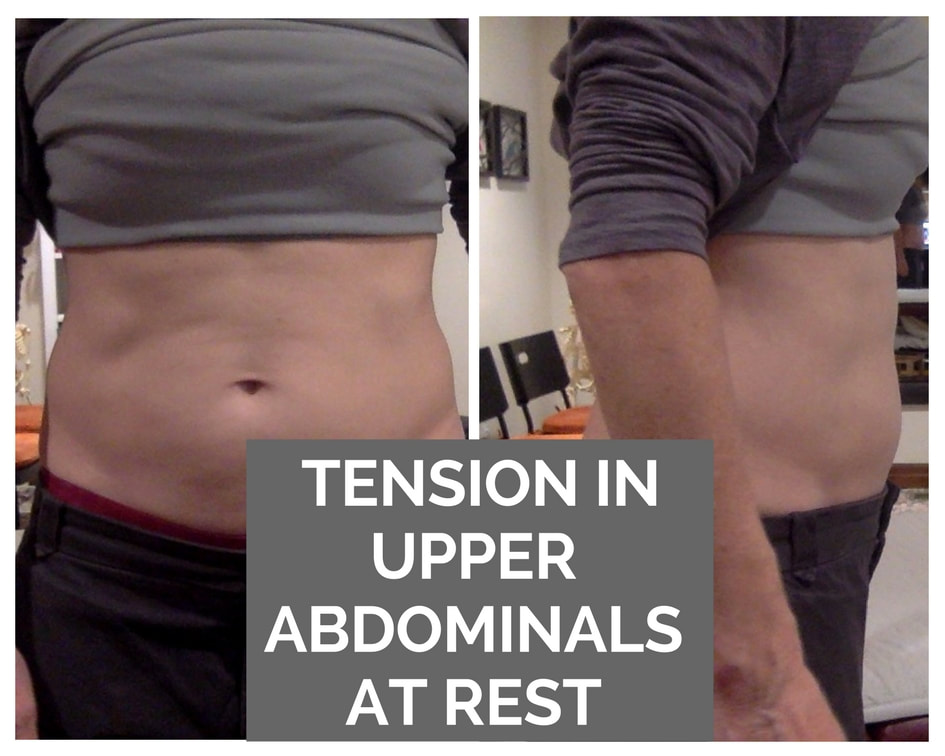| In my last post about breathing I talked about how optimal breathing is key to creating core strength. The muscles of the core: the glottis (voicebox), the diaphragm, the abdominals and the pelvic floor all need to move in coordination for effective generation of force. These muscles need to respond reflexively for whatever task is at hand, whether that be loading the dishwasher, working out at the gym, or chasing after your kids. Healing from diastasis recti, pelvic organ prolapse and urinary leakage is not going to happen with 100s of kegels and abdominal bracing contractions. Healing happens when we look at the whole system working together as a team. |
Integrate the team for a Healthy Core
- Skeletal System
- Muscle System
- Pressure System
- Nervous System
Let's look at a common muscle strategy that I see in women who present with DR, prolapse and urinary leakage: Overactive Upper Abdominals
Changing the pressure and muscle activation pattern is essential to recovery. Typically, this person has no problem breathing low into the belly, but may have a hard time filling the entire abdomino-pelvic canister evenly on the inhale (generation of appropriate intra-abdominal pressure, evenly distributed 360 degrees). Home practice will require breathing practices to connect with the movement of the lower ribcage, side and back body, and then bring this new awareness and pattern into movement and daily activities.
| | |














 RSS Feed
RSS Feed